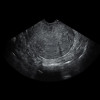
 IJCP Editorial Team
IJCP Editorial Team
Organic Dyspepsia – Intestinal Metaplasia Cancer
Organic dyspepsia is characterized by the presence of an established organic, systemic or metabolic cause with symptoms, and resolution or improvement occurs after addressing the underlying condition. Examples include gastroesophageal refl ux disease (GERD), drug-induced mucosal injury, peptic ulcer disease, malignancy (gastric, pancreatic, colorectal), intestinal ischemia and abdominal aortic aneurysm.
Gastric intestinal metaplasia (GIM) and gastric cancer are the main concerns of untreated/undertreated dyspepsia.
GIM is a premalignant condition of the human stomach with a 10-fold increased risk of gastric cancer.
GIM serves as a histological step before gastric dysplasia.
A high-quality esophagogastroduodenoscopy with retrofl exion and careful inspection of the cardia and fundus is recommended to identify patients who benefi t from surveillance.
Around 4-8 biopsies of two topographic sites (at the lesser and greater curvature, from both the antrum and the corpus) should be taken.
The management of GIM involves detailed and careful endoscopy with sampling, stratifying for the severity and extent of chronic atrophic gastritis and GIM, and testing and eradicating Helicobacter pylori. Risk assessment should be individualized through shared decision-making, and endoscopic surveillance every 3 to 5 years is recommended for those at higher risk, focusing on early detection and prevention.

IJCP Editorial Team
Comprising seasoned professionals and experts from the medical field, the IJCP editorial team is dedicated to delivering timely and accurate content and thriving to provide attention-grabbing information for the readers. What sets them apart are their diverse expertise, spanning academia, research, and clinical practice, and their dedication to upholding the highest standards of quality and integrity. With a wealth of experience and a commitment to excellence, the IJCP editorial team strives to provide valuable perspectives, the latest trends, and in-depth analyses across various medical domains, all in a way that keeps you interested and engaged.



















Please login to comment on this article